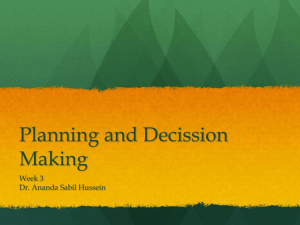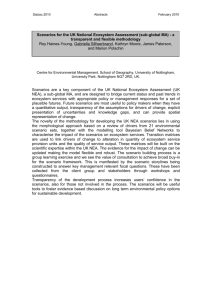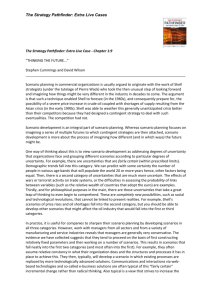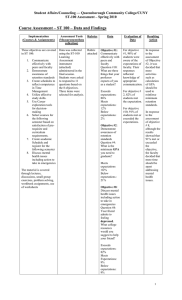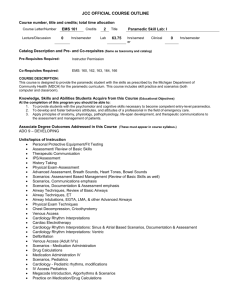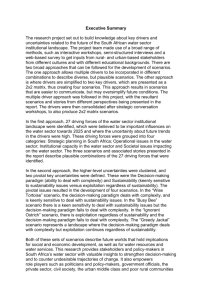10 Characteristics of a Great Strategic Plan
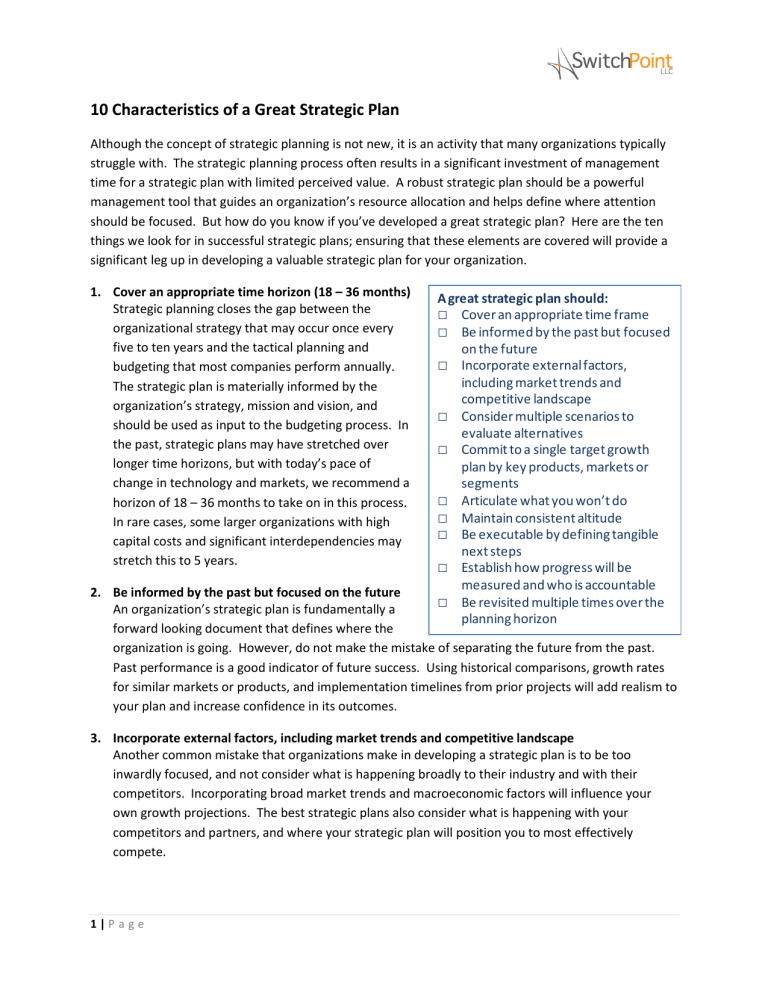
10 Characteristics of a Great Strategic Plan
Although the concept of strategic planning is not new, it is an activity that many organizations typically struggle with. The strategic planning process often results in a significant investment of management time for a strategic plan with limited perceived value. A robust strategic plan should be a powerful management tool that guides an organization’s resource allocation and helps define where attention should be focused. But how do you know if you’ve developed a great strategic plan? Here are the ten things we look for in successful strategic plans; ensuring that these elements are covered will provide a significant leg up in developing a valuable strategic plan for your organization.
1.
Cover an appropriate time horizon (18 – 36 months)
Strategic planning closes the gap between the organizational strategy that may occur once every five to ten years and the tactical planning and budgeting that most companies perform annually.
The strategic plan is materially informed by the organization’s strategy, mission and vision, and should be used as input to the budgeting process. In the past, strategic plans may have stretched over longer time horizons, but with today’s pace of change in technology and markets, we recommend a horizon of 18 – 36 months to take on in this process.
In rare cases, some larger organizations with high capital costs and significant interdependencies may stretch this to 5 years.
2.
Be informed by the past but focused on the future
An organization’s strategic plan is fundamentally a
A great strategic plan should:
□
Cover an appropriate time frame
□
Be informed by the past but focused on the future
□
Incorporate external factors, including market trends and competitive landscape
□
Consider multiple scenarios to evaluate alternatives
□
Commit to a single target growth plan by key products, markets or segments
□
Articulate what you won’t do
□
Maintain consistent altitude
□
Be executable by defining tangible next steps
□
Establish how progress will be measured and who is accountable
□
Be revisited multiple times over the planning horizon
forward looking document that defines where the organization is going. However, do not make the mistake of separating the future from the past.
Past performance is a good indicator of future success. Using historical comparisons, growth rates for similar markets or products, and implementation timelines from prior projects will add realism to your plan and increase confidence in its outcomes.
3.
Incorporate external factors, including market trends and competitive landscape
Another common mistake that organizations make in developing a strategic plan is to be too inwardly focused, and not consider what is happening broadly to their industry and with their competitors. Incorporating broad market trends and macroeconomic factors will influence your own growth projections. The best strategic plans also consider what is happening with your competitors and partners, and where your strategic plan will position you to most effectively compete.
1 | P a g e
Ten Characteristics of a Great Strategic Plan
4.
Consider multiple scenarios to evaluate alternatives
Scenario analysis is a powerful analytic tool that makes strategic planning more thorough and recognizes that organizations can’t predict the future. Rather than developing a single, most likely plan for how your organization will develop, instead define three or more scenarios; evaluate how each alternative would impact your organization and determine whether there are specific factors your organization can manage or control to drive to the optimal outcomes.
Three scenarios evaluated should include:
“Zero growth” where your revenues stay at steady state, which will help you understand the economics of remaining stagnant
“Most likely”, the growth plan that the organization deems the highest probability to occur
“Stretch goal” where you significantly exceed organizational expectations , which helps define the capital requirements in a best case scenario
Additional scenarios could be defined to add shades of gray to these, but this set of three scenarios will define guiderails around which you can develop effective planning.
5.
Commit to a single target growth plan by key products, markets or segments
Once scenarios have been evaluated, choose a single plan around which the strategic plan will be based. The strategic plan should include a full pro-forma financial analysis of the revenues and costs implied by the plan and resources required to get there. It should articulate what products, markets, and projects the organization will be investing in to reach the plan.
Although the strategic plan only discusses a single growth plan, the outcomes from the scenario analysis should be retained, potentially as appendix to the strategic plan. There will be valuable insight in the outcomes of alternatives that may be used at a point down the road.
6.
Articulate what you won’t do
Strategy and planning are fundamentally about choices, and the choices that you opt not to pursue are as important to articulate as those that you do pursue. Clearly stating what products, markets, or projects will be deemphasized will help align your organization and management team behind the strategic plan and reduces the potential for misinterpretation of how budget or resources should be invested.
7.
Maintain consistent altitude
Avoid the urge to get overly detailed or tactical in the strategic plan. The end product should maintain a consistent level of strategy, describing where the organization is going to go, but should not include every single step required or solve every issue that gets raised. It is inevitable in this exercise that issues will be uncovered that require additional research, analysis and/or refinement.
These issues should only be included in a material way in the strategic plan if their resolution will impact the strategic direction of the organization. Keeping the “strategy” the focus of the strategic plan will help avoid getting bogged down at this stage in unnecessary details.
2 | P a g e
Ten Characteristics of a Great Strategic Plan
8.
Be executable by defining tangible next steps
The near term action plan is the most important part of the strategic plan; it turns the exercise of strategic planning from theoretical into executable. A specific portfolio of projects should be defined in the strategic plan, and form the organization’s near term roadmap. Projects should pass the MECE test (mutually exclusive and collectively exhaustive) so that as a set, they achieve the strategy, but individually are discrete from each other.
For each project, consideration should be given to each of the following dimensions:
Description of project (e.g., overview, objectives)
Expected outcomes and benefits
Key activities to achieve outcomes and dependencies
Scope, resources and timing
Potential risks
9.
Establish how progress will be measured and who is accountable
You manage what you measure. Accomplishing the goals set out in the strategic plan is partially dependent on establishing and tracking internal measures that are tied to success. Ideally, a set of
3-5 measures that act as success indicators will be developed out of the strategic plan.
Measurement and accountability mechanisms will help your organization recognize when a specific project, or the strategic plan, needs to pivot and move in a different direction.
10.
Be revisited multiple times over the planning horizon
Strategic plans are like route maps in that they provide directions to your preferred destinations.
But just as you would adjust your route while driving as conditions on the road change, your strategic plan will and should change over the course of time. As your organization evolves, new information is uncovered, and market dynamics change, the things that are important to focus on are likely to change. Your organization should establish a regular cadence where portfolio and project level metrics are evaluated and interventions are taken to ensure progress against the initial roadmap remains on target.
Revisiting the alternative scenarios during regular reviews of the strategic plan and key performance metrics can also be beneficial – it can help you identify signals or indicators of how the market might unfold and improve your ability to recognize similar “inflection points” in the future.
For more information contact:
Ted Schneider
Principal, SwitchPoint LLC ted@switchpointllc.com
Brian Leslie
Principal, SwitchPoint LLC brian@switchpointllc.com
3 | P a g e



